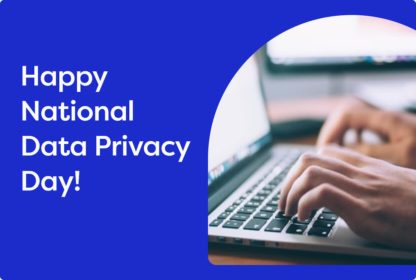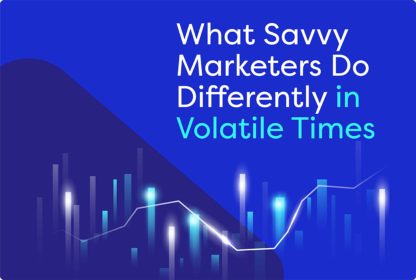It’s no secret that third-party cookies are on the way out. And with them go one of the most reliable assets in the digital marketer’s toolkit. Is effective marketing without cookies possible? Well, as a lost young girl and her dog once said, “There’s no place like home for engaging consumers with relevant marketing.”
I might be paraphrasing. No matter. Let’s dig in.
Safari and Firefox already block third-party cookies by default. But the big blow is just around the corner, when Google Chrome will also stop supporting third-party cookies. Google Chrome owns 62% of the internet browser market share. When combined with Safari and Firefox, you’re looking at 85% of browsers being “cookie-challenged.”
This is a big deal. Pretty much the entire digital advertising ecosystem was build on third-party cookies. In a cookieless world, marketers lose a core component of targeting, measurement, and attribution.
Google may have delayed throwing out cookies by two years, targeting the end of 2023, but now is the time to get ready for a cookieless world. Marketers need unique, differentiated channels that don’t rely on cookies and instead allow them to use and gather first-party data. Channels like Programmatic Direct Mail.
Programmatic Direct Mail connects with consumers
Programmatic Direct Mail is a an advertising channel that securely integrates large-scale online and offline data with always-on machine learning to engage consumers at home with relevant physical media.
In short, Programmatic Direct Mail enables 1:1 marketing at scale by connecting online behavior to offline households, which are a more stable identifier than third-party cookies. This makes it an essential channel for any marketer looking to diversify their marketing mix. It’s also much greener than traditional direct mail, avoiding wasteful over-sending by only engaging prospects who are most likely to convert.
Three ways to make the most of Programmatic Direct Mail
Venturing into a new marketing channel can be daunting, and like other methods, if you’re not doing it correctly you’re not getting the most out of your budget. Here are three tips on how to get the most out of Programmatic Direct Mail.
1. Select the right Programmatic Direct Mail partner
Finding the right partner is all about asking the right questions.
First question: Is this more than just automation?
Programmatic Direct Mail is more than automation and triggers. Marketing automation can be highly effective, but it relies on events like someone visiting a webpage or clicking a button that aren’t actual indicators of intent in order to initiate a campaign. With Programmatic Direct Mail, on the other hand, machine learning algorithms determine actual intent by training their models against real-time intent and transaction data, optimizing towards whatever goal it is that you have set.
Second question: What about the data?
What differentiates Programmatic Direct Mail from traditional direct mail is the infusion of real-time intent and transaction data and the ability to map it confidently to a unique household. While anyone can purchase demographic and household data, what’s going to make one PDM partner stand out from the crowd is the nature of the intent data. This, above everything else, will be the biggest difference maker.
Third question: How much support do you need?
You need to think about if you have the bandwidth and the resources to learn the nuances of a new channel and new platform. Maybe you’d rather have a team supporting you and implementing the campaigns. Whether you want a partner with managed services or more of a self-serve model is up to you and your own comfort level in working with these platforms.
2. Understanding performance
Programmatic Direct Mail is still a relatively new channel and how you evaluate performance requires a different mindset.
If you’re used to working in digital performance channels, you’ll need to get used to longer attribution windows. The way consumers interact with a piece of mail is very different from the way they interact with a social feed or a search ad. A Programmatic Direct Mail “impression” can live on a person’s counter for days or weeks, as opposed to an ad on a social feed which is instantaneous.
Of course, even if you’re coming from a traditional direct mail background, you’ll still need to make some adjustments. For instance, with Programmatic Direct Mail you don’t need to send as much to power the same, or even better, performance down the line. You won’t need to rely as much on total upfront investment and a “drop” to funnel down into a goal. It’s more about actively monitoring and managing against your performance goals in the moment.
Still a bit unsure? Well, when in doubt, trust the experts. This is still a new channel, so industry benchmarks and standards aren’t established outside of platforms running these programs. That means people managing these platforms are your best source to help you understand benchmarks, performance, and pacing of campaigns. Make the most of them!
3. Think “Full-Funnel”
While one of the most popular use cases for Programmatic Direct Mail is website retargeting, it can help bolster performance and sales across the entire customer lifecycle. Especially when your first-party data is at the core of your strategy.
For instance, if you have a file of your highest average order customers, you can use that file as a seed audience for modeling audiences (lookalikes/actalikes) for prospecting. You can also score that list by conversion potential. This can help you drive more efficient performance and not burn out your customer list.
Your first-party data isn’t just for engaging customers, either. It can also be an essential tool for improving customer experiences throughout the customer lifecycle. We’ve all experienced that pair of shoes we looked at once only to be followed us around the internet for weeks on end, or the emails that come every day from a brand you’ve never even heard of. Those are bad experiences. If you try that in someone’s home, that’s a terrible experience. Your PDM partner should help mitigate bad customer experiences by using your first-party data to create block lists and filters. These will ensure your customers do not receive irrelevant messaging from your brand.
Even better is to pair targeted messages with different segments in your CRM. Instead of blocking someone, you can use that opportunity to re-engage them based on their current relationship with your brand.
Lastly, you need to continually test new strategies. This is a best practice in general but it is still important, especially with time running out for cookies. You want to use these next two years for testing and finding out what works and what doesn’t. Now that you’ll be marketing without cookies, you’ll need to be fully prepared and have tools at your disposal to offset those losses.
Want to learn more about how you can make Programmatic Direct Mail a part of your post-cookie marketing strategy? Check out our Acquisition and Retention solutions, or contact us directly via our Contact Us page.



